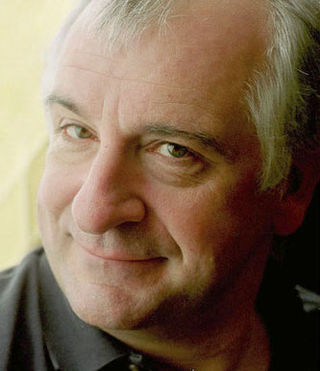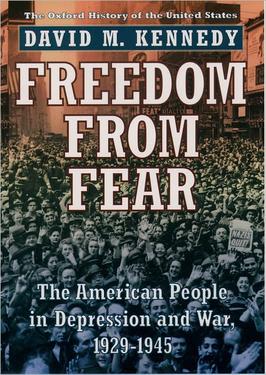
Douglas Noel Adams was an English author, humourist, and screenwriter, best known as the creator of The Hitchhiker's Guide to the Galaxy (HHGTTG). Originally a 1978 BBC radio comedy, The Hitchhiker's Guide to the Galaxy developed into a "trilogy" of five books which sold more than 15 million copies in his lifetime. It was further developed into a television series, several stage plays, comics, a video game, and a 2005 feature film. Adams's contribution to UK radio is commemorated in The Radio Academy's Hall of Fame.

The Universal Decimal Classification (UDC) is a bibliographic and library classification representing the systematic arrangement of all branches of human knowledge organized as a coherent system in which knowledge fields are related and inter-linked. The UDC is an analytico-synthetic and faceted classification system featuring detailed vocabulary and syntax that enables powerful content indexing and information retrieval in large collections. Since 1991, the UDC has been owned and managed by the UDC Consortium, a non-profit international association of publishers with headquarters in The Hague, Netherlands.

PLOS is a nonprofit publisher of open-access journals in science, technology, and medicine and other scientific literature, under an open-content license. It was founded in 2000 and launched its first journal, PLOS Biology, in October 2003.

Who's Who is a reference work. It has been published annually in the form of a hardback book since 1849, and has been published online since 1999. It has also been published on CD-ROM. It lists, and gives information on, people from around the world who influence British life. Entries include notable figures from government, politics, academia, business, sport and the arts. Who's Who 2023 is the 175th edition and includes more than 33,000 people.

Remixed & Revisited is a remix album by American singer and songwriter Madonna. It was released on November 24, 2003, by Maverick Records and Warner Bros. Records. The album contains four songs, in remixed form, from her 2003 ninth studio album American Life and a previously unreleased song, "Your Honesty", originally written and recorded for her 1994 sixth studio album Bedtime Stories. The other tracks included are the live performance of "Like a Virgin" and "Hollywood" on the 2003 MTV Video Music Awards—which ended with Madonna kissing co-performers Britney Spears and Christina Aguilera—and a remix of 1985 single "Into the Groove".

Babine Lake borders the Skeena and Omineca regions of central British Columbia, Canada. Vehicle access to the lake, via BC Highway 16 and Nilkitkwa forestry service road, is by road about 105 kilometres (65 mi) northeast of Smithers; via BC Highway 16 and Central Babine Lake Highway, is about 132 kilometres (82 mi) east of Smithers; or via Babine Lake Road, is about 20 kilometres (12 mi) northeast of Burns Lake.

Anthea Bell was an English translator of literary works, including children's literature, from French, German and Danish. These include The Castle by Franz Kafka, Austerlitz by W. G. Sebald, the Inkworld trilogy by Cornelia Funke and the French Asterix comics with co-translator Derek Hockridge.

CD154, also called CD40 ligand or CD40L, is a protein that is primarily expressed on activated T cells and is a member of the TNF superfamily of molecules. It binds to CD40 on antigen-presenting cells (APC), which leads to many effects depending on the target cell type. In total CD40L has three binding partners: CD40, α5β1 integrin and integrin αIIbβ3. CD154 acts as a costimulatory molecule and is particularly important on a subset of T cells called T follicular helper cells. On TFH cells, CD154 promotes B cell maturation and function by engaging CD40 on the B cell surface and therefore facilitating cell-cell communication. A defect in this gene results in an inability to undergo immunoglobulin class switching and is associated with hyper IgM syndrome. Absence of CD154 also stops the formation of germinal centers and therefore prohibiting antibody affinity maturation, an important process in the adaptive immune system.
Ellen Wolf Schrecker is an American professor emerita of American history at Yeshiva University. She has received the Frederick Ewen Academic Freedom Fellowship at the Tamiment Library at NYU. She is known primarily for her work in the history of McCarthyism. Historian Ronald Radosh has described her as "the dean of the anti-anti-Communist historians."

Adrenomedullin is a vasodilator peptide hormone of uncertain significance in human health and disease. It was initially isolated in 1993 from a pheochromocytoma, a tumor of the adrenal medulla: hence the name.
The Folklore Society (FLS) is a registered charity under English law based in London, England for the study of folklore. Its office is at 50 Fitzroy Street, London home of the Royal Anthropological Institute of Great Britain and Ireland.

Paired box gene 9, also known as PAX9, is a protein which in humans is encoded by the PAX9 gene. It is also found in other mammals.

Houston Center is a retail and office complex in Downtown Houston, Texas, United States. It is owned by Brookfield Property Partners and Spear Street Capital, LLC, and operated separately by Jones Lang LaSalle (JLL) and Brookfield Property Management.

Timothy P. Egan is an American author, journalist and former op-ed columnist for The New York Times. Egan has written nine books. Egan, a third-generation Westerner, lives in Seattle.

Freedom from Fear: The American People in Depression and War, 1929–1945 is a 1999 nonfiction book by the American historian David M. Kennedy. Published as part of the Oxford History of the United States, Freedom from Fear covers the history of the United States during the Great Depression and World War II. It won the 2000 Pulitzer Prize for History.
Steven J DeRose is a computer scientist noted for his contributions to computational linguistics and to key standards related to document processing, mostly around ISO's Standard Generalized Markup Language (SGML) and W3C's Extensible Markup Language (XML).

This timeline of events leading to the American Civil War is a chronologically ordered list of events and issues that historians recognize as origins and causes of the American Civil War. These events are roughly divided into two periods: the first encompasses the gradual build-up over many decades of the numerous social, economic, and political issues that ultimately contributed to the war's outbreak, and the second encompasses the five-month span following the election of Abraham Lincoln as President of the United States in 1860 and culminating in the capture of Fort Sumter in April 1861.
Clarence Gabriel Moran, barrister and writer, was educated at Wadham College, Oxford, where he obtained a third in Mods in 1897, and graduated BA in 1899. He obtained a first class pass in Roman law in the Trinity Bar Examinations, 1901. He became a barrister of the Inner Temple in January 1902. He was an examiner of the court, empowered to take examination of witnesses in all Divisions of the High Court. He was assistant deputy coroner for the South London District from 1927. He is said to have been "well known" and "noteworthy".
John Fraser Hart is an American geographer. Over the course of his career he published over 150 scholarly papers, over a dozen books, and taught over 50,000 university students in his 65 years of teaching from 1949 until his retirement in 2015.














